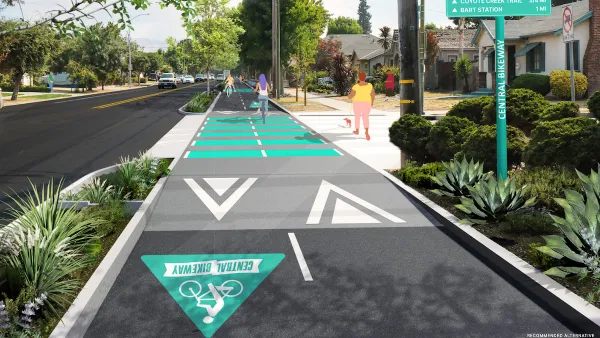Unlike conventional food hubs, Louisville's planned $50 million FoodPort will gather and 'incubate' regional food businesses. The hope is to breathe life into the area's struggling small farms.

Conceived by the nonprofit Seed Capital Kentucky, West Louisville's FoodPort promises a new and improved food hub. And food hubs can accomplish a great deal: "The one thing they all have in common is creating economies of scale for small and mid-sized farmers. Individually, these farmers wouldn't produce enough to reach large regional markets; together, linked by a food hub, they can."
West Louisville is beset by economic challenges, including unemployment and depressed earnings. As a light industrial development, the FoodPort may spur revitalization. "In some ways the FoodPort is more like a mixed-use development than a conventional food hub. Most hubs are single-entity businesses or organizations, while the FoodPort focuses on co-locating existing businesses that are, as [project director Caroline Heine] puts it, 'symbiotically related.'"
And away from the city, small farmers face a decline in demand for their traditional cash crop, tobacco. Rather than let those farms die, backers of the FoodPort want a local food renaissance. "Heine hopes that the FoodPort will do that for Kentucky—and help dispel the notion that local food is just for upper middle class yuppies. Seed Capital Kentucky believes it has identified significant unmet demand for local food in Louisville."
FULL STORY: Why Louisville Is Betting Big on a Massive Food Wonderland

Planetizen Federal Action Tracker
A weekly monitor of how Trump’s orders and actions are impacting planners and planning in America.

Silicon Valley ‘Bike Superhighway’ Awarded $14M State Grant
A Caltrans grant brings the 10-mile Central Bikeway project connecting Santa Clara and East San Jose closer to fruition.

Amtrak Cutting Jobs, Funding to High-Speed Rail
The agency plans to cut 10 percent of its workforce and has confirmed it will not fund new high-speed rail projects.

Planting for Change: How Trees Are Powering Climate Action
"Combating Climate Change with Trees" highlights how Southern California communities are strategically planting and nurturing urban forests to cool neighborhoods, improve air quality, and advance environmental justice.

Could Planners Adopt a 'Place Sherpa' Role?
Building upon the framework of a local housing panel, Chuck Wolfe suggests that advocacy and policy discussions would be enhanced by a “sherpa mindset” that focuses on lived experiences, facilitates applied knowledge of urban places, and promotes stakeholder discussion.

California Advances Its 30x30 Conservation Goals
California is making significant progress toward its 30x30 conservation goals, but looming federal rollbacks and gaps in biodiversity protections could threaten the state’s efforts to protect lands and coastal waters by 2030.
Urban Design for Planners 1: Software Tools
This six-course series explores essential urban design concepts using open source software and equips planners with the tools they need to participate fully in the urban design process.
Planning for Universal Design
Learn the tools for implementing Universal Design in planning regulations.
Caltrans
City of Fort Worth
Mpact (founded as Rail~Volution)
City of Camden Redevelopment Agency
City of Astoria
City of Portland
City of Laramie


























